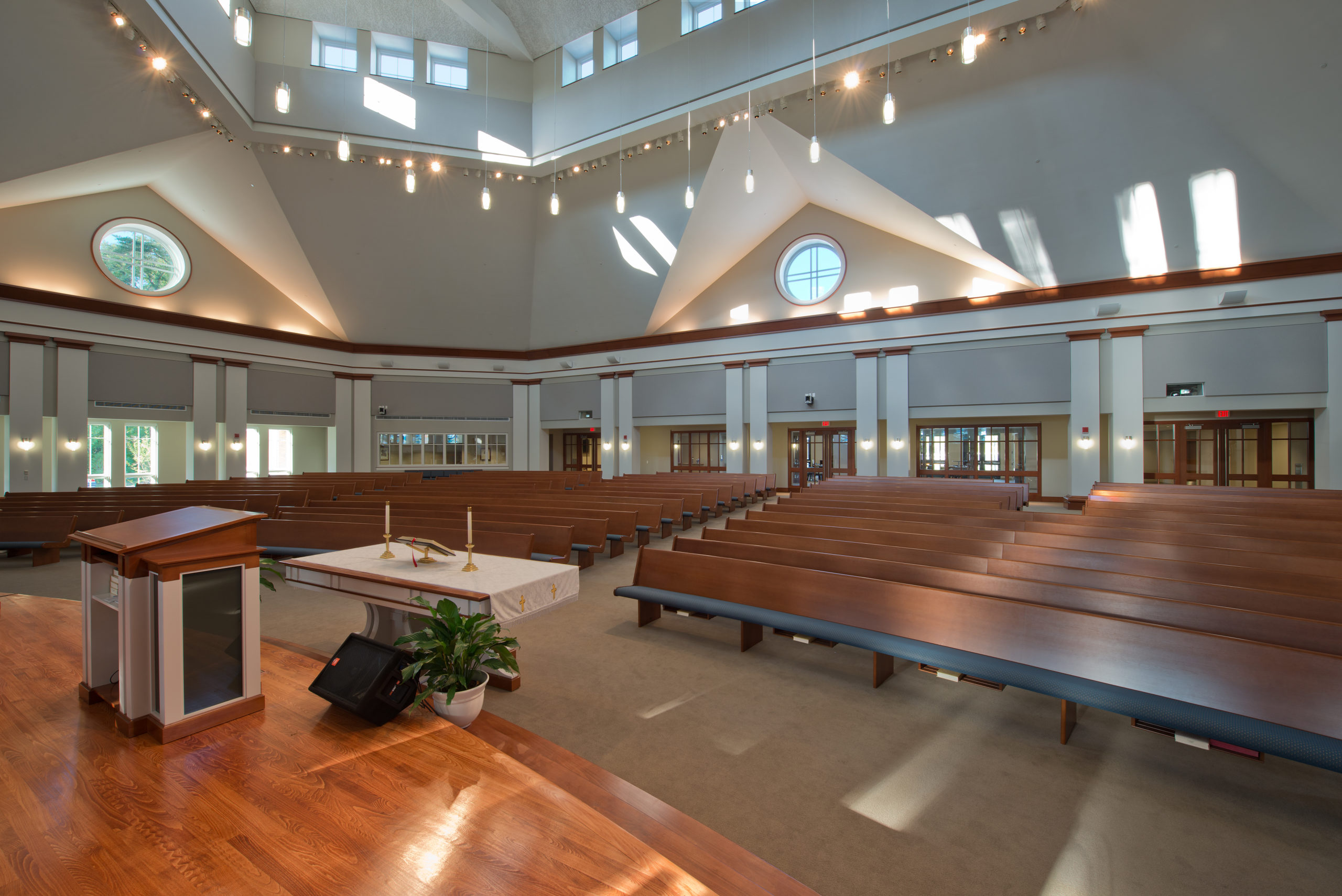
Continuing our series of design topics that come up on nearly every church project, I want to share some thoughts on the use of daylight in worship spaces, and the increased options we believe churches have today as they design technologically effective, functional, and inviting worship spaces.
For over 25 years now, churches that place heavy ministry emphasis on A/V production capabilities for worship have favored what I would descriptively term “theatrical” worship spaces. Like their counterparts in the entertainment industry, these are entirely controlled production environments that start with the concept of a “black box” into which sound and light are introduced artificially to create effects appropriate to the desired program. The level of control desired makes daylight (at least) a contrary nuisance to be carefully controlled: much simpler just to forego the windows.
In many cases, the black box environments of 25 or 30 years ago were especially driven by the desire for high quality projection. The projector technologies simply could not compete with any significant amount of ambient daylight in the worship environment. And even when projector brightness could be achieved, the cost of these brighter projectors placed them outside of what most churches could afford to pay.
In recent years, the rapid evolution of technology has produced significantly more powerful projection at relatively small cost, along with the use of liquid crystal display (LCD), plasma (PDP) and emerging laser phosphor display technologies, among others. Technology advances so rapidly, that we do not specify A/V equipment beyond the performance capability desired until construction reaches a point that the equipment will be installed within a few months. To do otherwise is to specify equipment that will be obsolete by the time it is installed.
Many of these emerging technologies now offer (affordable) display brightness to a level that the absolute black box environment is no longer essential for text and image legibility. As a church architect, we now ask our clients to consider other factors along with projection and display in deciding how much daylight to introduce into a worship space: how transparent to the community do you want your church congregation to be? Are there site features such as natural areas that might be visible? Are you interested in stained glass or other art glass windows that are best lit by sunlight? And in general, would you enjoy worship space that employs daylight in aesthetically-pleasing and spirit-moving ways?
Daylighting, like technology itself, must be carefully studied, understood, and introduced in carefully controlled ways to be effective in worship without unintended side effects. We suggest, though, that the desire for a high quality projection and production environment no longer automatically suggests a black box auditorium. My own personal sense is that the next generation of millennial church-goers will trend toward welcoming, transparent, and inspirational sacred space that comfortably integrates both daylight and technology.